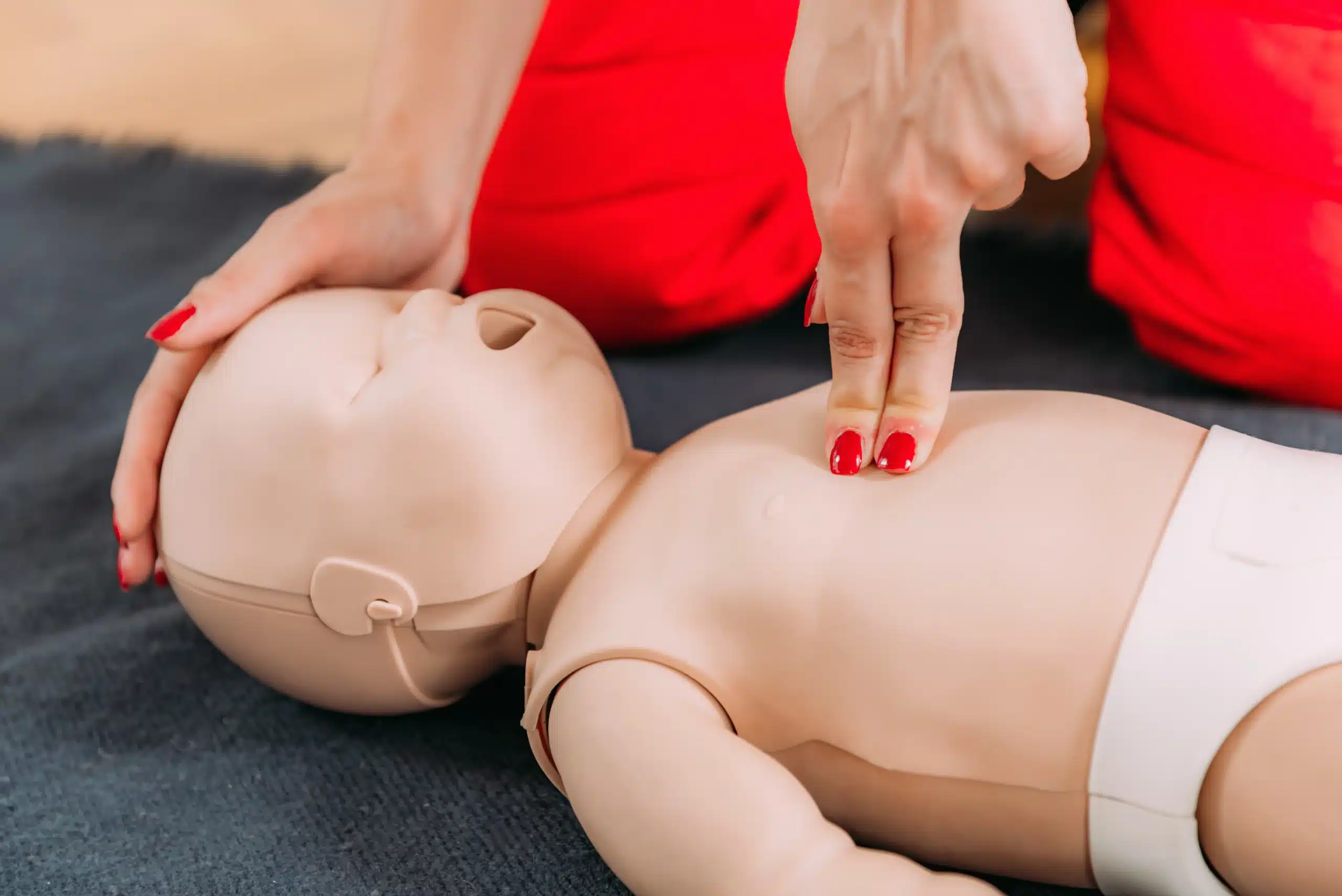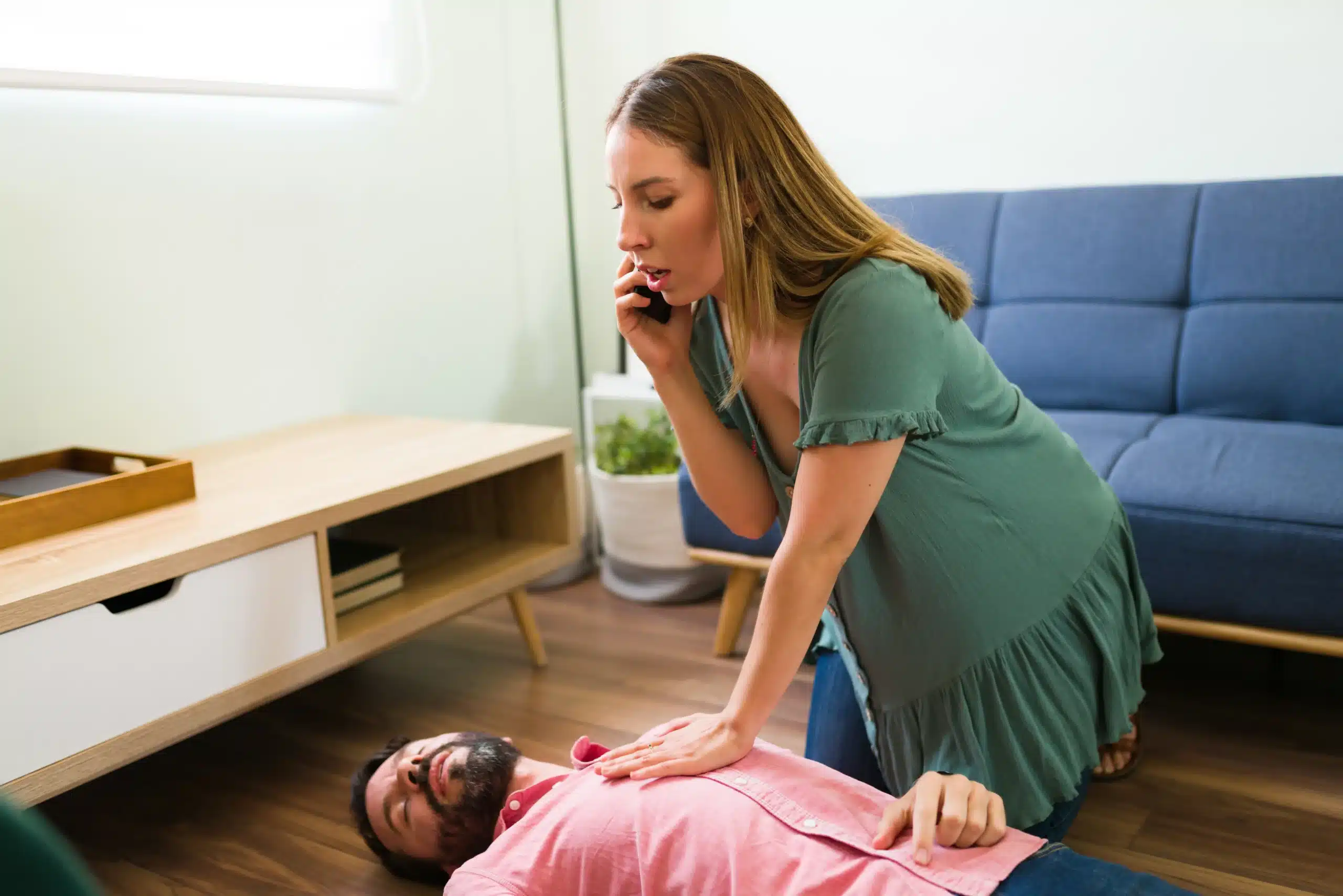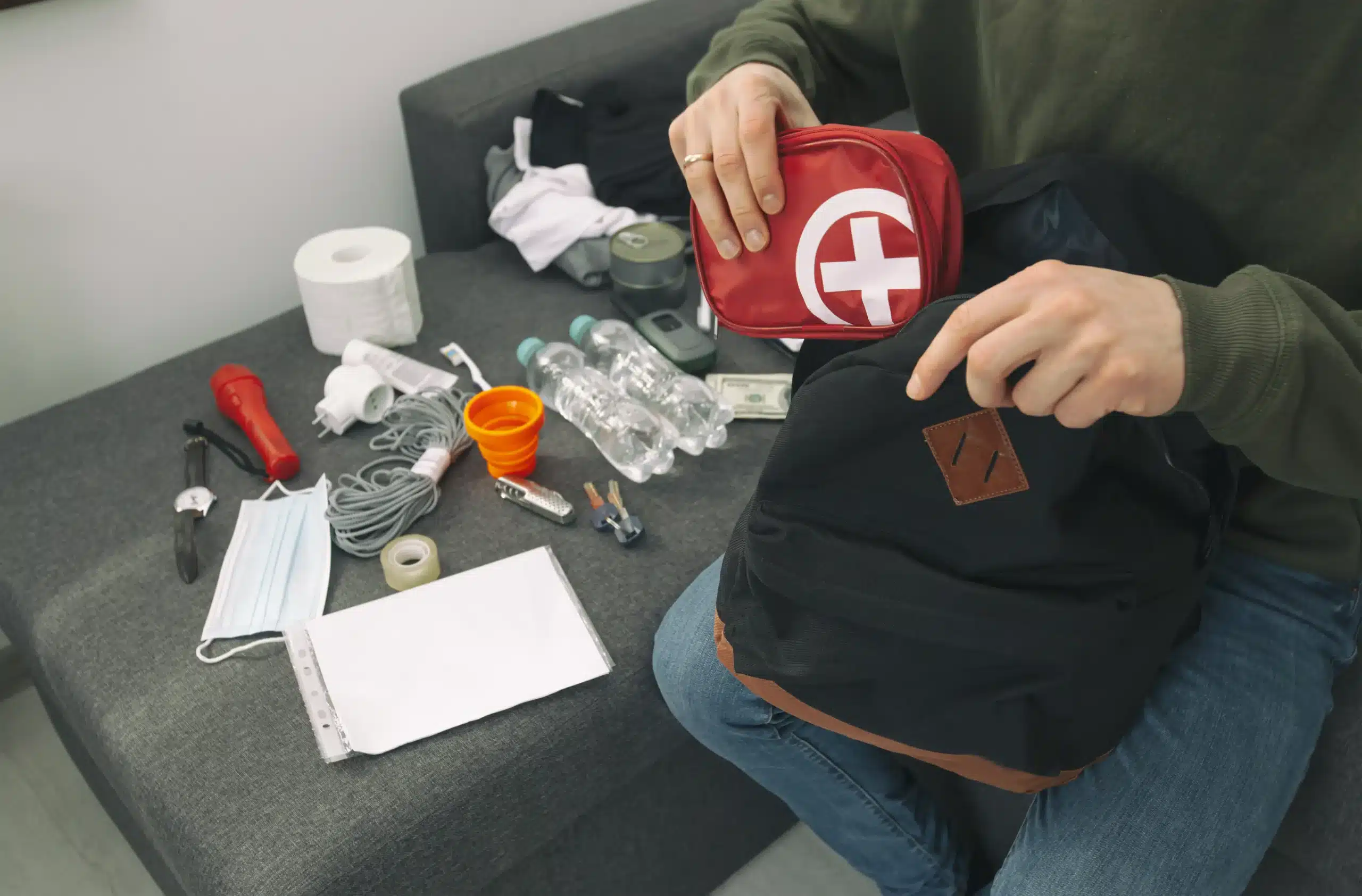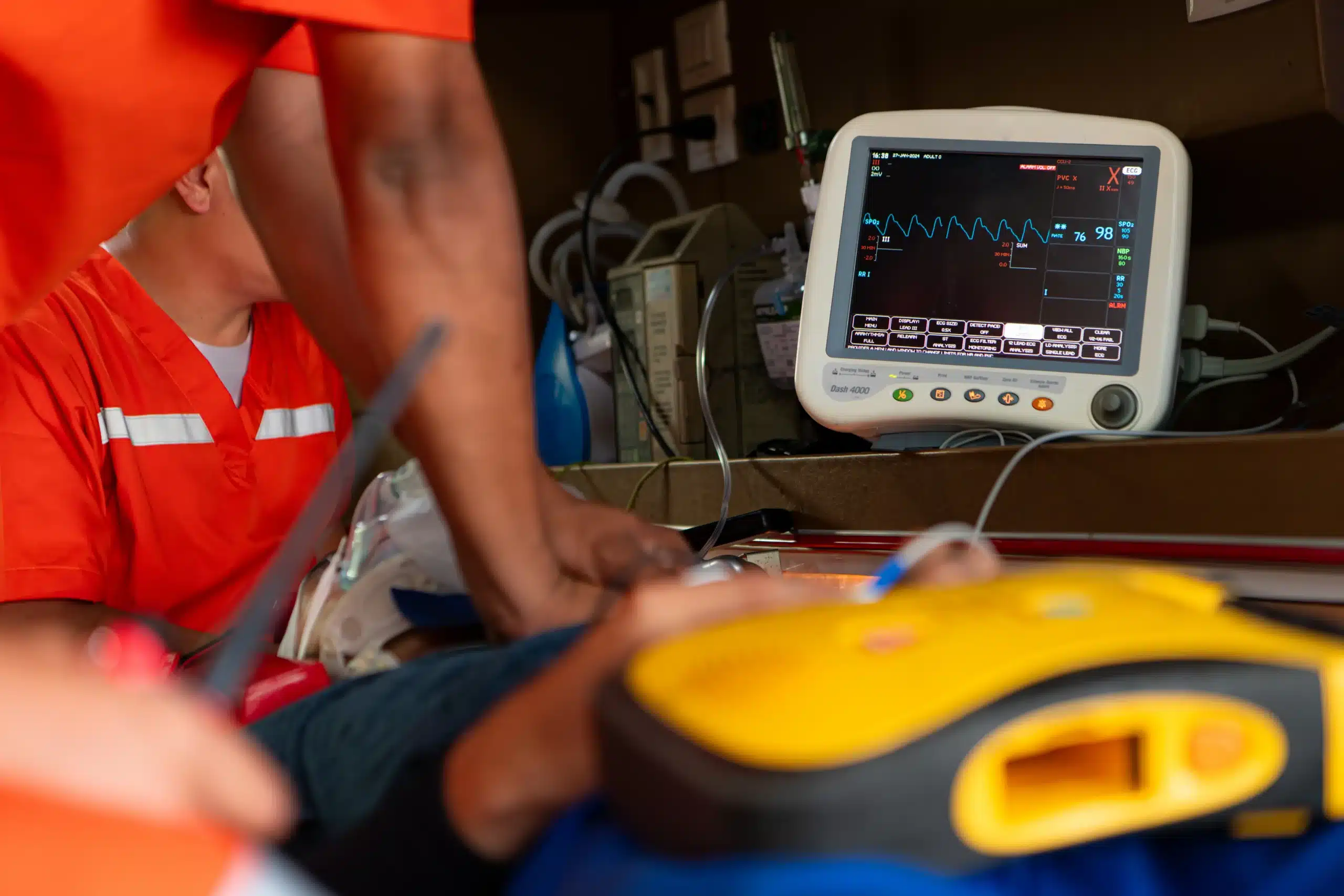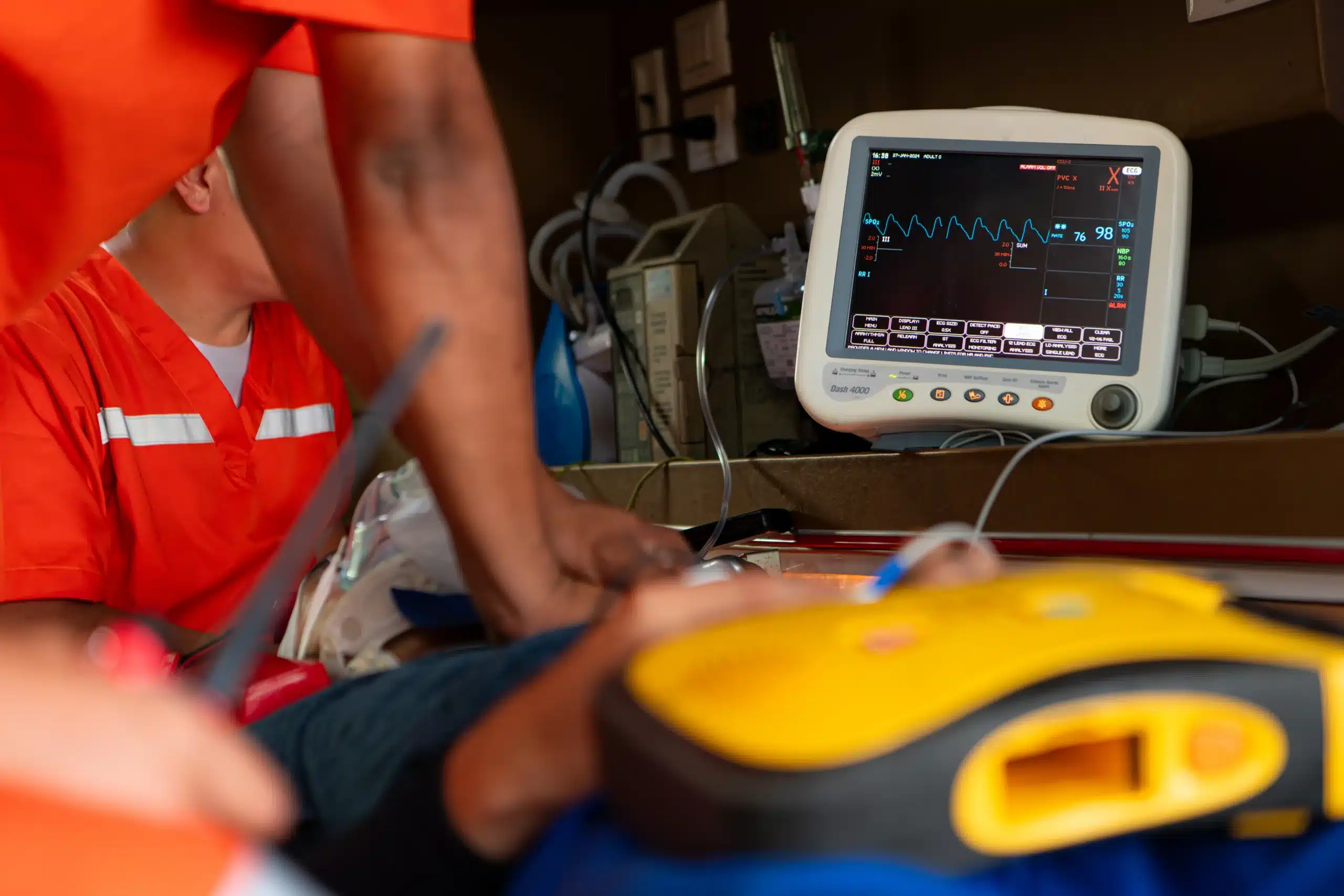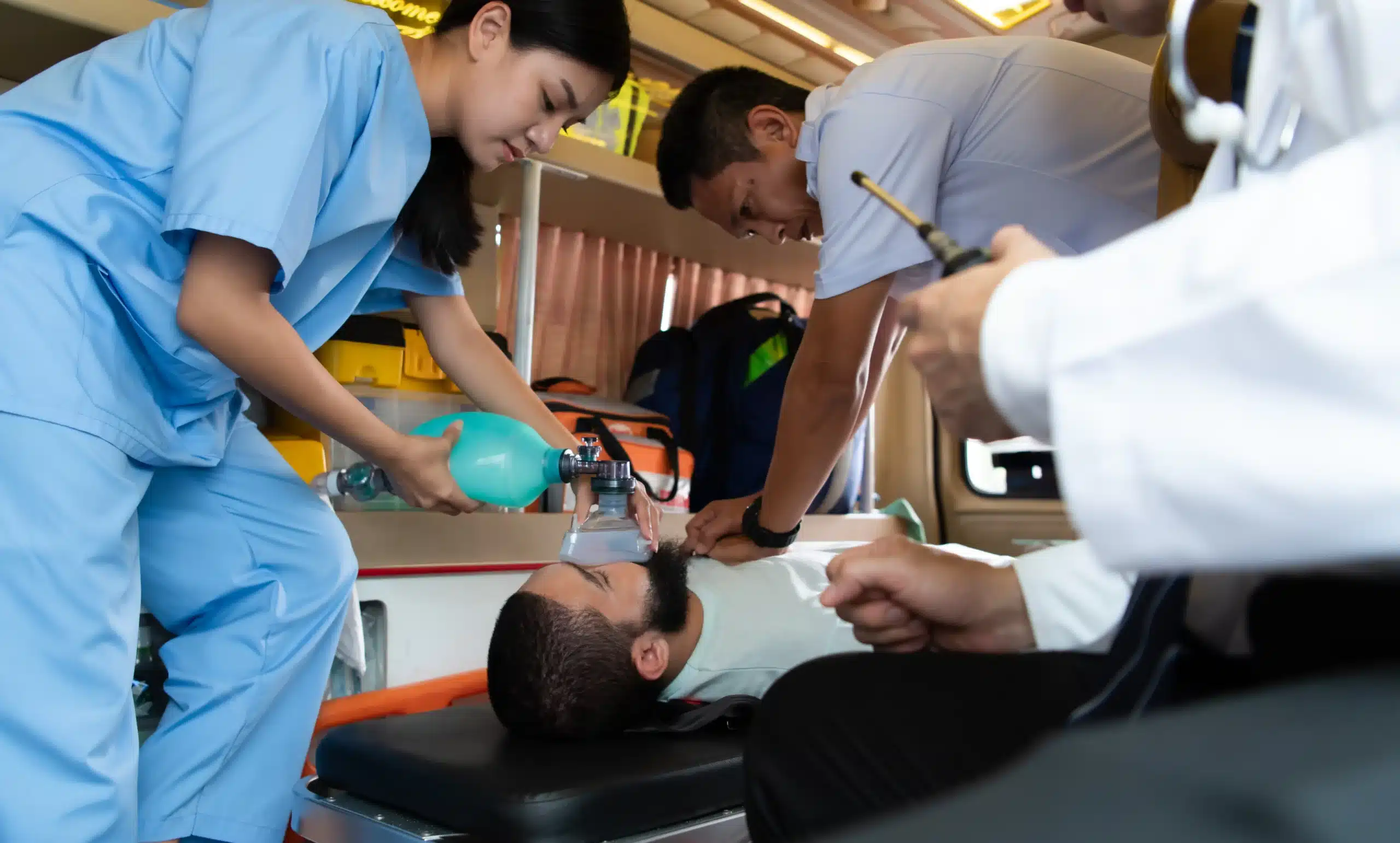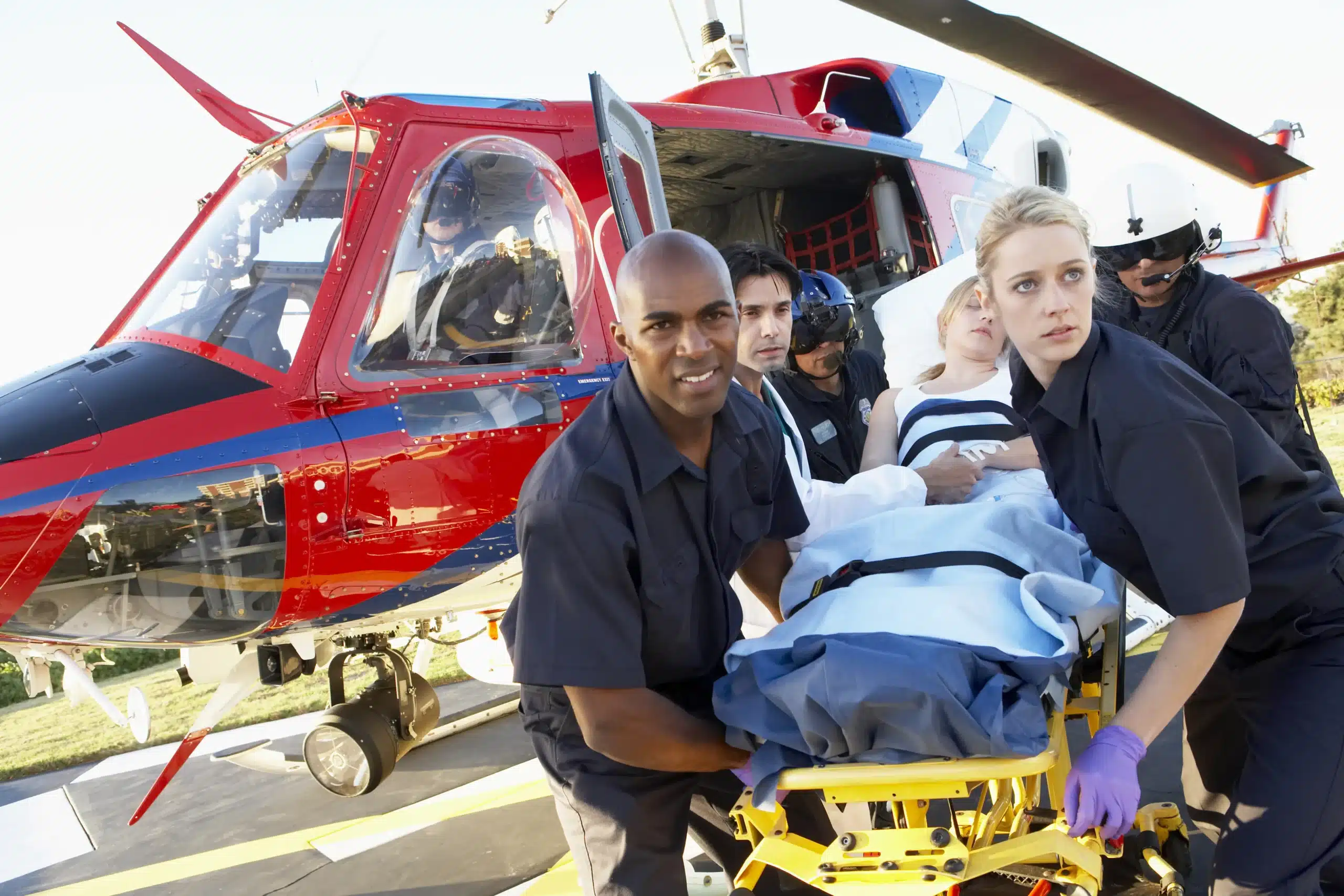Life is unpredictable. Emergencies can happen anytime, anywhere. Being equipped with life-saving skills like CPR can make all the difference. If you’re in Sacramento and searching for a convenient way to learn CPR, online CPR classes in Sacramento might be the perfect fit. They offer the flexibility to learn at your own pace, combined with the crucial hands-on practice needed to master this vital skill. This article explores the benefits of online CPR training, the different types of courses available, and how to choose the right one for your needs. We’ll also delve into top providers in Sacramento, discuss costs and certification, and offer tips for successful online learning.
Key Takeaways
- Online CPR training fits your busy life: Blended learning combines online coursework with hands-on skills sessions, offering flexibility and convenience.
- Choose accredited training with hands-on practice: Look for providers like Rocklin CPR Classes, offering AHA-certified courses and emphasizing practical skills development.
- Stay current with your skills: Regular practice and recertification are key to maintaining CPR proficiency and confidence in emergencies.
What are Online CPR Classes in Sacramento?
Online CPR classes in Sacramento offer a flexible way to learn this vital life-saving skill. They blend online learning with the essential hands-on practice required for effective CPR. This approach makes training accessible to busy professionals, parents, and anyone looking to get certified.
What Are Online CPR Classes?
Online CPR classes combine online instruction with in-person skills sessions. You’ll learn the fundamentals of CPR—chest compressions, rescue breaths, and how to recognize cardiac arrest—through interactive online modules. These modules often include videos, animations, and quizzes. After completing the online portion, you’ll attend a short, in-person skills session with a certified instructor to practice and demonstrate your proficiency.
Benefits of Online CPR Training
One of the biggest advantages of online CPR training is its flexibility. You can learn at your own pace, anytime, anywhere, making it much easier to fit into a busy schedule. Plus, studies show that online CPR certification can be just as effective as traditional classroom learning. Reputable online courses, like those offered by Rocklin CPR Classes, adhere to the same rigorous standards set by organizations like the American Heart Association (AHA). You’ll receive high-quality instruction and earn a certification recognized by employers and regulatory bodies.
Types of Online CPR Courses
Several types of online CPR courses cater to different needs. Understanding the differences can help you choose the best fit.
Fully Online Courses
Some courses are entirely online, meaning even the skills check is virtual. While convenient, these courses may not be accepted by all organizations. Verify the requirements of your workplace or licensing board before enrolling in a fully online course. Fully online students must be highly self-motivated to complete all portions of the training to ensure they learn CPR correctly.
Blended Learning
Blended learning CPR courses, like those offered by the American Red Cross, combine online learning with a mandatory in-person skills session. This format offers the flexibility of online learning with hands-on practice and feedback from a certified instructor. This is often the preferred option for those who want a balance of convenience and practical experience.
Specialized Certifications (BLS, First Aid, etc.)
Beyond basic CPR certification, you can also find online or blended learning options for more specialized certifications. These include Basic Life Support (BLS), Advanced Cardiovascular Life Support (ACLS), Pediatric Advanced Life Support (PALS), and First Aid. Rocklin CPR Classes offers a range of these AHA-certified courses.
Top Providers & Their Unique Features
Finding the right CPR class is crucial. Let’s look at some top providers in the Sacramento area and what makes each one stand out. I’ve done some digging to give you a clear picture of your options.
Rocklin CPR Classes
Rocklin CPR Classes offers a comprehensive range of American Heart Association (AHA) courses, including BLS, ACLS, PALS, CPR, and First Aid. They emphasize hands-on learning with modern equipment and experienced instructors. This approach ensures you’re not just getting certified—you’re also developing practical, life-saving skills. Explore their BLS course and other offerings like ACLS and PALS certifications for healthcare professionals. See if their hands-on training style is right for you.
American Red Cross
The American Red Cross is a well-known name in emergency preparedness, offering various CPR/AED classes in Sacramento. They have several learning formats, including in-person, online, and blended learning (a mix of online and in-person). Their instructor-led sessions focus on skills practice, team scenarios, and testing, providing a well-rounded learning experience.
CPR Certification Sacramento
If you’re looking for BLS CPR certification from an AHA-certified training site, consider CPR Certification Sacramento. They offer AHA Healthcare Provider certification in every class, covering BLS, CPR, and AED. This focus ensures you receive high-quality, recognized training. Visit their website for details on their BLS certification process.
Safety Training Seminars
Safety Training Seminars provides a range of AHA-certified courses, including ACLS. They champion hands-on, in-person training, especially for AHA certifications, emphasizing the value of practical experience compared to online-only options. If you learn best by doing, their in-person training might be a good match.
Costs, Duration, & Certification
Getting CPR certified is an investment in life-saving skills. Understanding the costs, time commitment, and certification process is essential. Let’s break down what you can expect when pursuing online CPR classes in Sacramento.
Course Pricing
CPR certification costs vary depending on the provider and the type of certification. Basic CPR and AED courses often start around $60, while more comprehensive courses, including First Aid or BLS (Basic Life Support) certification, can cost around $80. For example, CPR Certification Sacramento offers its BLS CPR & AED course for $59.95, while the combined BLS CPR, AED, and First Aid course is $79.95. Check with various providers, like Rocklin CPR Classes, for their latest pricing and group discounts.
Time Commitment
Online CPR courses offer flexibility. The time required depends on the material covered. A basic CPR course might take two hours, while a more advanced course, including First Aid or BLS, could take closer to four. The American Red Cross offers various CPR classes with different durations, so you can choose one that fits your schedule.
Certification Validity & Recognition
Most CPR certifications, including those from the American Heart Association (AHA), are valid for two years. Choose a course with an OSHA-compliant certification to meet workplace standards. This is especially important for healthcare professionals and those in roles requiring CPR certification. For more information on AHA certification, review their BLS course options.
Post-Course Support
Many online CPR courses offer immediate access to your digital certification upon completion. Some providers also offer access to a digital training history for tracking certifications and recertification requirements. Look for courses with clear instructions on accessing your certification and any ongoing support. Contact Rocklin CPR Classes directly with any questions about post-course support.
Choose the Right Online CPR Class
So, you’re ready to take a CPR class—fantastic! But with so many options available, how do you pick the right online CPR course for your needs? This section breaks down the key factors to consider.
Factors to Consider
When choosing between online and in-person CPR certification, think about what works best for you. Consider your learning style. Do you thrive in a traditional classroom setting, or do you prefer the flexibility of online learning? Your schedule plays a big role, too. Online courses offer the convenience of learning at your own pace, anytime, anywhere. Finally, and perhaps most importantly, check your employer’s requirements. Some professions require in-person skills testing, even if the coursework is completed online. If you’re a healthcare provider in Sacramento, check with your employer before registering for a fully online course. For example, online ACLS classes often have specific requirements.
Compare Course Features
The right CPR class provider offers more than just a certificate. Look for courses certified by a recognized organization like the American Heart Association (AHA). AHA-certified courses ensure you’re learning the most up-to-date techniques. Experienced instructors are another important factor. Their expertise translates to better learning outcomes for you. And while online learning is convenient, hands-on practice is still crucial for mastering CPR. A good online course will guide you through skills practice and may require an in-person skills check. Find out what equipment is used and make sure it aligns with current industry standards. CPR classes in Sacramento often highlight these features.
Accreditation
Accreditation matters. An accredited online CPR certification course holds the same weight as an in-person course, ensuring it’s recognized by employers and regulatory bodies. Do your research and confirm the accreditation of any online CPR course you’re considering. This is especially important if you’re pursuing certification for professional reasons. Discussions about online CPR certification often address accreditation concerns.
Address Concerns & Misconceptions
Some people worry that online CPR training isn’t as effective as in-person training. However, research suggests that online CPR certification can be just as effective, and sometimes even more effective, than traditional classroom learning. Online courses often incorporate interactive elements and simulations that enhance learning and retention. One potential drawback of online CPR courses is the need for in-person skills practice. Many online courses address this by requiring a separate in-person skills session. This blended approach combines the flexibility of online learning with the essential hands-on practice needed to confidently perform CPR. Online CPR resources can help clarify any doubts you might have.
Enroll & Prepare for Your Online CPR Class
Now that you’ve decided to learn CPR, let’s break down how to enroll and prepare for your online class. A little prep work goes a long way!
Registration
First things first: finding the right CPR class. Look for a provider offering American Heart Association (AHA)-certified courses, as they are the gold standard. Experienced instructors and hands-on practice with up-to-date equipment are also key to quality training. Check if the provider offers classes in your area—Rocklin CPR Classes, for example, covers Rocklin, Roseville, and Sacramento. Once you’ve found a good fit, registration is usually straightforward, often handled directly through the provider’s website.
Required Materials & Tech
Online CPR classes offer a convenient way to learn, often blending online modules with in-person skills sessions. Before you start, make sure you have the necessary tech. This typically includes a reliable computer, a stable internet connection, and sometimes a webcam and microphone for interactive sessions. Some providers may require specific software or apps, so check their website for details. You might also need a physical textbook or study guide, although many courses now offer digital materials.
Tips for Online Learning Success
Online learning requires a bit of self-discipline. Set aside dedicated study time and treat it like any other important appointment. Break down the material into manageable chunks, take notes, and don’t be afraid to rewind and review sections you find tricky. Actively participating in online discussions or forums, if available, can also reinforce your learning. Remember, the online portion is just one piece of the puzzle. You’ll need to be proactive in completing both the online modules and the in-person skills practice to truly master the CPR techniques.
Skills Practice & Assessment
The real learning comes with hands-on practice. After completing the online portion, you’ll participate in a supervised, in-person skills session. This is where you’ll put your knowledge into action, practicing on mannequins and working through realistic scenarios. This hands-on component is essential for developing muscle memory and confidence. The AHA emphasizes the importance of meaningful skills practice, team scenarios, and skills testing to ensure proficiency. Studies have shown that immediate feedback, often provided through training mannequins, significantly improves learning and motivation. This combination of online learning and hands-on practice gives you a well-rounded and effective learning experience.
Effectiveness & Participant Experiences
CPR training has evolved, and understanding the effectiveness of modern methods, along with participant experiences, is key to choosing the right course. This section explores the strengths of online CPR training, addresses its limitations, and emphasizes the importance of ongoing practice.
Feedback & Improvements
Real-Time Feedback
Effective CPR hinges on accurate technique. Studies show that real-time visual feedback dramatically improves CPR quality, especially for beginners. Imagine having a virtual coach guiding you, ensuring proper hand placement and compression depth. This immediate feedback is invaluable for building confidence and proficiency. Research confirms that this type of feedback significantly enhances the quality of CPR performed.
Interactive Elements
Interactive elements play a crucial role in bridging the gap between knowledge and application. Many providers rely on visual perception to gauge CPR quality, but studies suggest this perception isn’t always accurate. That’s where interactive training tools come in. They provide opportunities to assess and refine technique, ensuring participants develop a realistic understanding of effective CPR.
Visual Learning Tools
Visual learning tools, like training mannequins with detailed feedback mechanisms, boost motivation and proficiency. Seeing your progress and understanding areas for improvement keeps you engaged and encourages consistent practice. This research highlights the importance of immediate feedback in enhancing learning and skill development.
Strengths of Online CPR
Online CPR certification offers flexibility and accessibility, making it a practical choice. Research indicates online training can be just as effective as in-person classes, sometimes even more so. This is particularly helpful for those with busy schedules or limited access to traditional training centers.
Addressing Limitations
While online CPR training offers numerous advantages, it’s important to acknowledge its limitations. One key drawback is the lack of hands-on practice with a physical mannequin. To address this, many online courses recommend or require a blended learning approach, combining online modules with in-person skills sessions. This combination ensures you gain both the knowledge and the practical skills needed to perform CPR effectively. An article discussing online CPR certification emphasizes the importance of this hands-on component.
Ongoing Practice & Recertification
Just like any skill, CPR proficiency requires ongoing practice and recertification. Accredited online CPR courses equip you with the foundational knowledge and skills, but regular refreshers are essential for maintaining confidence and competence in emergencies. This ensures you’re always prepared to act quickly and effectively when it matters most. Maintaining your certification demonstrates your commitment to staying current with your training.
Related Articles
- CPR Training in Sacramento: Your Guide – Rocklin CPR Classes
- Basic Life Support (BLS) in Sacramento: Your Complete Guide – Rocklin CPR Classes
- CPR Classes in Sacramento: A Certification Guide
- CPR Courses in Roseville: Your Complete Guide – Rocklin CPR Classes
- RQI Sacramento: Your Guide to CPR Certification – Rocklin CPR Classes
Frequently Asked Questions
Is online CPR certification as good as in-person training? Online CPR training, especially blended learning that includes an in-person skills session, can be just as effective as traditional classroom learning. Studies show online learning can even be more effective due to interactive elements and personalized feedback. The key is choosing a reputable provider that aligns with established guidelines like those from the American Heart Association. A blended approach gives you the flexibility of online learning with the crucial hands-on practice component.
How long does online CPR certification last? Most CPR certifications are valid for two years. It’s essential to stay current with the latest guidelines and techniques by recertifying before your current certification expires. Check with your employer or licensing board for specific requirements, as some professions may have different renewal timelines.
What’s the difference between CPR, BLS, ACLS, and PALS? CPR (Cardiopulmonary Resuscitation) is the foundational skill for responding to cardiac arrest. BLS (Basic Life Support) builds upon CPR, adding techniques like using a bag-valve mask and working as a team. ACLS (Advanced Cardiovascular Life Support) is for healthcare professionals, covering advanced life-saving procedures. PALS (Pediatric Advanced Life Support) focuses on the specific needs of infants and children. The right course for you depends on your profession and individual needs.
How much does online CPR certification cost? The cost varies depending on the provider and the type of course. Basic CPR courses typically start around $60, while more comprehensive courses like BLS or those including First Aid can range closer to $80. Look for providers offering group discounts or package deals if you’re certifying with friends, family, or colleagues.
What if I don’t have a lot of experience with online learning? Many online CPR courses are designed to be user-friendly, even for those new to online learning. Reputable providers offer technical support and clear instructions. The online modules are often broken down into manageable sections with interactive elements and progress checks to keep you engaged and on track. Don’t hesitate to reach out to the provider if you have any questions or need assistance.
